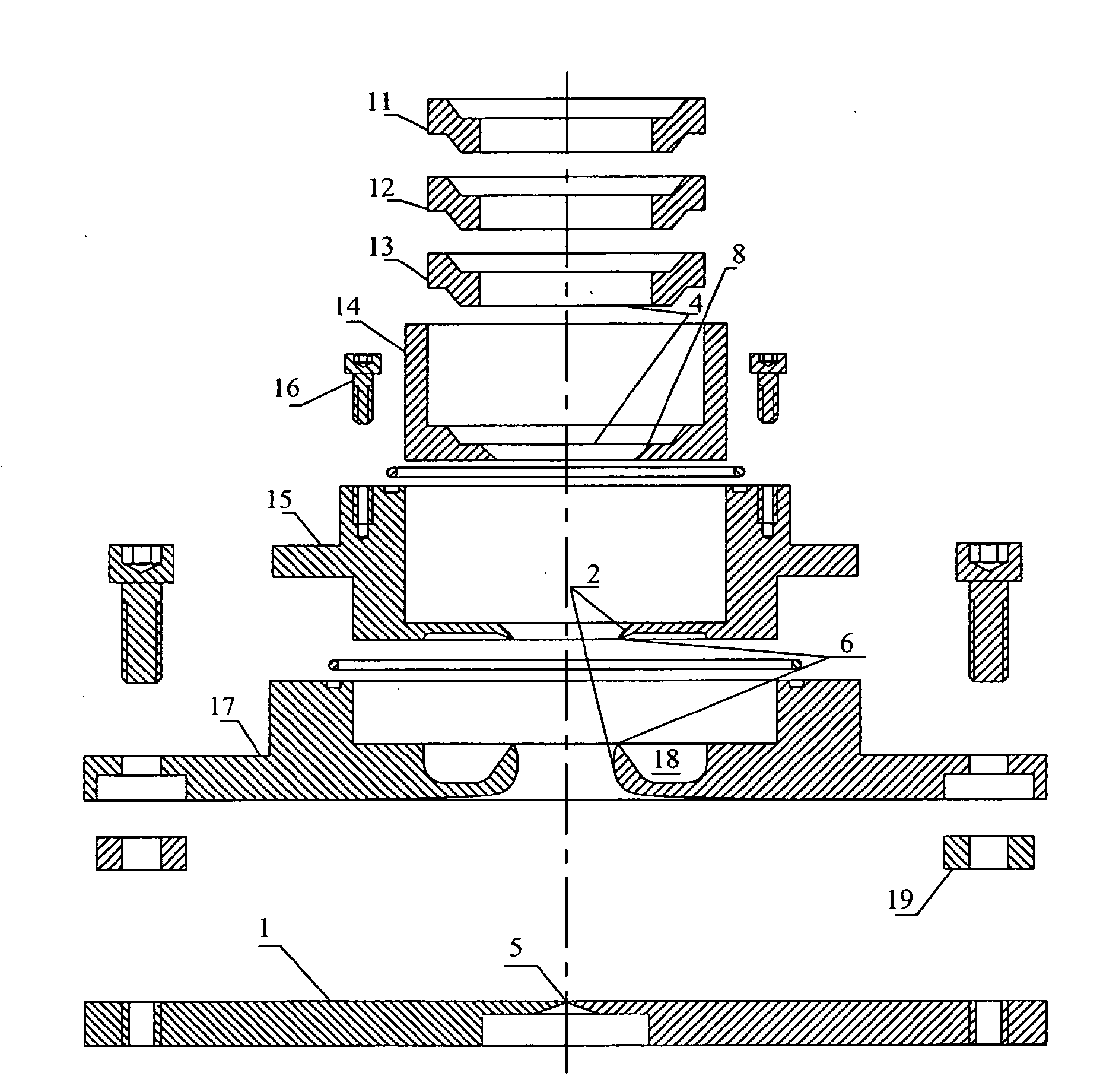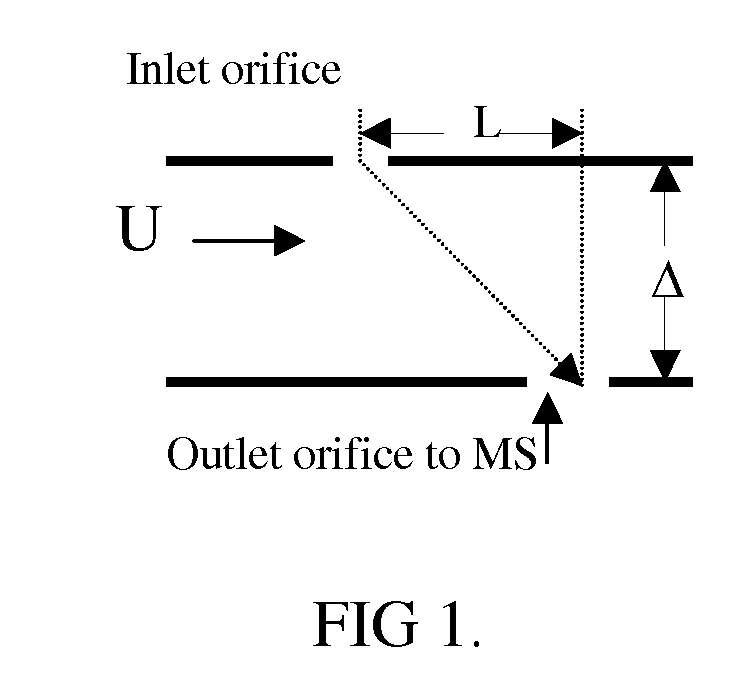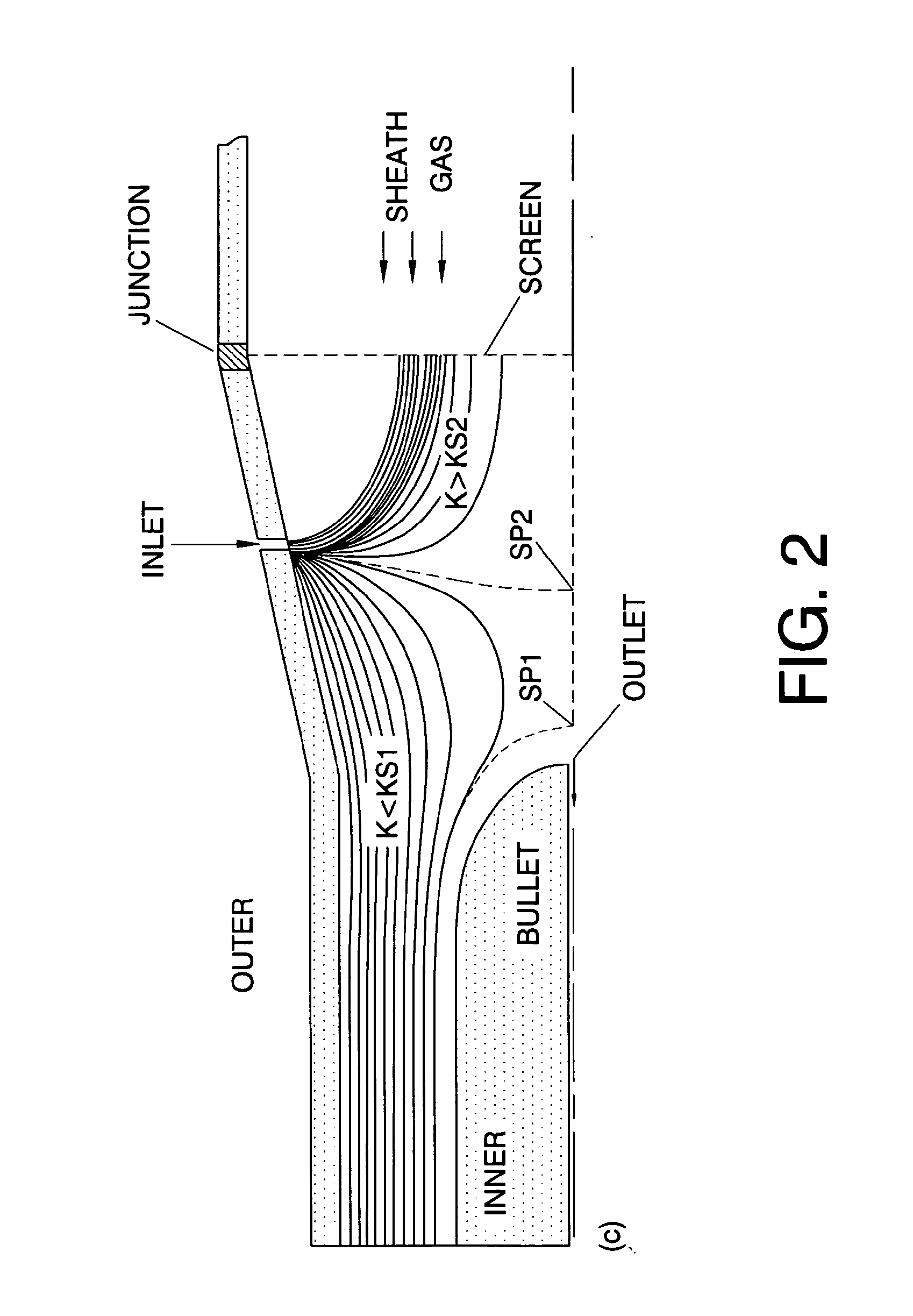Coupling between axisymmetric differential mobility analyzers and mass spectrometers or other analyzers and detectors
a technology of differential mobility analysis and mass spectrometer, which is applied in the field of mass spectrometry analysis of ions, can solve the problems requiring the development of complex system coupling, and achieving a level of reliability and sensitivity that is difficult to match by specialized developmen
- Summary
- Abstract
- Description
- Claims
- Application Information
AI Technical Summary
Problems solved by technology
Method used
Image
Examples
Embodiment Construction
[0029]The geometry of the critical flow (wet) surfaces of a preferred embodiment of the invention is shown in FIG. 3 for an axisymmetric axial DMA, where a variant of the method Labowsky and Fernández de la Mora (2004-2006) is used to bring into the close vicinity of the axis all the ions of a critical mobility Z* originating at the inlet slit. One key improvement of the DMA of FIG. 3 over that of FIG. 2 is the substitution of the bullet-shaped electrode supporting the ion outlet orifice by a flat electrode. The new configuration permits close to 100% ion transmission from the DMA outlet into the inlet of the MS, since the flat electrode can be simultaneously the ion outlet of the DMA and the ion inlet to the MS. The same advantage noted in the case of DMA-MS coupling applies to the coupling of a DMA with other analyzers or detectors. In conventional cylindrical DMAs, the length of tubing that the ions must travel from the ion outlet slit into the detector is generally of several cm...
PUM
 Login to View More
Login to View More Abstract
Description
Claims
Application Information
 Login to View More
Login to View More - R&D
- Intellectual Property
- Life Sciences
- Materials
- Tech Scout
- Unparalleled Data Quality
- Higher Quality Content
- 60% Fewer Hallucinations
Browse by: Latest US Patents, China's latest patents, Technical Efficacy Thesaurus, Application Domain, Technology Topic, Popular Technical Reports.
© 2025 PatSnap. All rights reserved.Legal|Privacy policy|Modern Slavery Act Transparency Statement|Sitemap|About US| Contact US: help@patsnap.com



